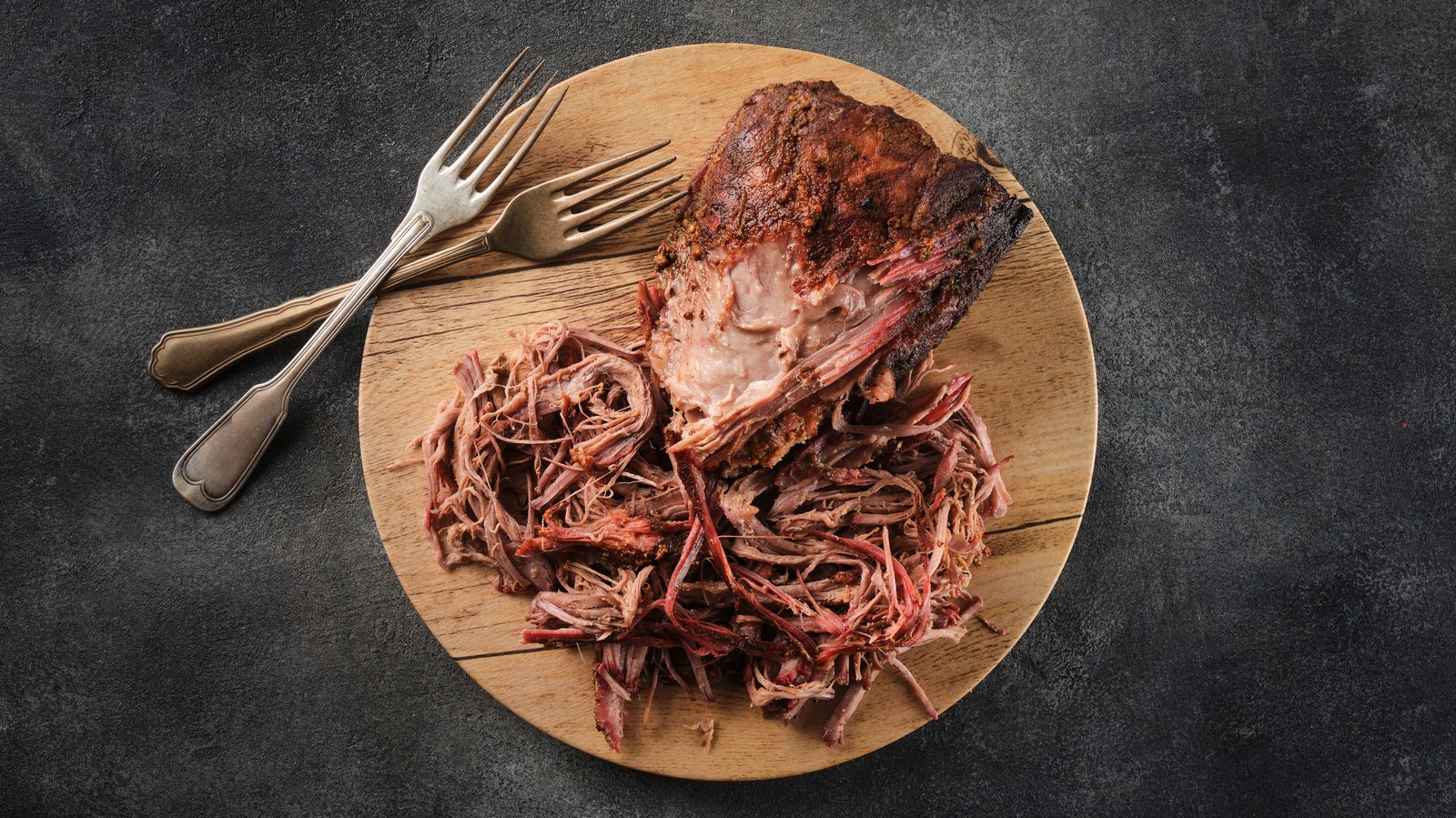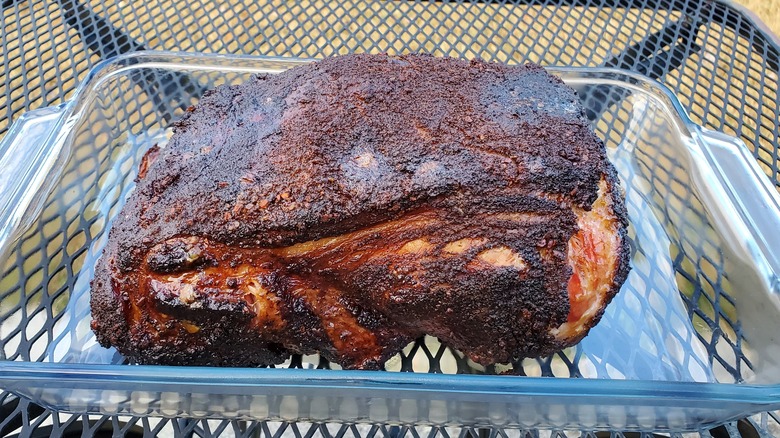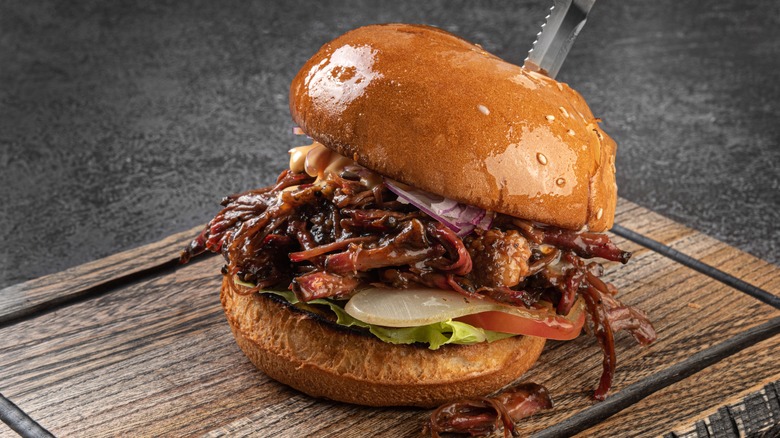As a classic of any barbecue, pulled pork is possibly one of the most experimented-with recipes in American culture. However, no matter how you cut it, there’s one part of the pig that’s better than all the others when you want something tender, succulent, and packed with flavor. Michelle Wallace, renowned pitmaster, TV personality, and owner and founder of B’tween Sandwich Co., tells us that pork shoulder will always reign supreme.
“It’s best because of the make-up of the pork shoulder,” says Wallace. “When cooked low and slow, the meat becomes tender and gelatinous in the best way. Fat equals flavor and in this case the fat content helps create a juicy, flavorful dish.” Pork shoulder is absolutely packed with heat-soluble collagen that needs to reach 160 degrees Fahrenheit for many hours before it starts to melt into pure flavor. However, if prepared properly, that cheap piece of tough meat transforms into one of the best cuts of pork to smoke.
When allowed to come to 200 degrees Fahrenheit over 14-plus hours, the pork not only unlocks its own flavor potential, but also all the unrealized taste from your smoker. This combination of flavors achieves every goal for pulled pork — tenderness, juiciness, smoky flavor, and plenty of satisfying fat distributed evenly throughout your pan of pulled meat. While you could, in theory, achieve a similar result with a ham, hocks, trotters, or even belly, they do not benefit nearly as much, or in the same ways, from long smoke times.
Why pulled pork shoulder loves to be smoked
Pulled pork only needs to be slow-cooked to develop great flavor, so why is there so much emphasis on smoking versus braising or stewing? Because even when you account for flavor differences between pork shoulder and pork butt, both shoulder cuts develop a beautiful “bark,” the flavor-dense shell of pig protein, rub, and smoke particles created by long smokes. When you shred your pork, all the flavor from the bark distributes through the meat, leaving it juicy but not wet, and flavorful but not overpowering.
“Smoking the pork shoulder allows time to break down all the connective muscle and impart the beautiful smoke flavor of the chosen wood that is used,” Michelle Wallace explains. “Avoid any method that is quick cooking with a (whole) pork shoulder. A quick cooking method just doesn’t allow for the meat to break down and become tender enough to pull … The low and slow flavor of the smoke is just perfection for the marbled cut of pork.”
When cooking pulled pork, Wallace likes to boost the flavor by adding soy sauce, which deepens the savory and umami notes of the meat. Even wet ingredients like soy sauce won’t interfere with your bark, as its water evaporates during the smoke. Plus, umami is an excellent pairing with any number of condiments and toppings, especially when combined with the rich, fatty juiciness of pork shoulder.
Why pulled pork pairs well with condiments
One of the most significant principles of assembling a barbecue plate is to add enough toppings and condiments to accent your meat without letting them overshadow all those hours you spent preparing it. “The beauty of pulled pork is that it takes on flavors from sauces nicely while still allowing the pork to shine,” says Michelle Wallace. “Some of my favorite sauces to use on pulled pork are [barbecue] sauce, jerk sauce, and even just a pork pan gravy. A few tips on making these sauces at home is to use what you have on hand.”
If you’re unsure where to start, Wallace goes on to explain that you can improve any store-bought barbecue sauce with fresh ingredients like herbs and citrus, brightening up their heavier, sweeter flavors. “A good pan gravy is made from the excess fat and drippings after cooking the pork,” she continues. “Add a little bit of roux, stock, and herbs and you’ll have a tasty sauce for your pork.” Whether it’s pan gravy, jerk dressing, or barbecue sauce, all of these complement the richness of a pork shoulder. Provided you used a flavorful enough rub, your meat should have plenty of its own taste that holds its own against any condiment.






